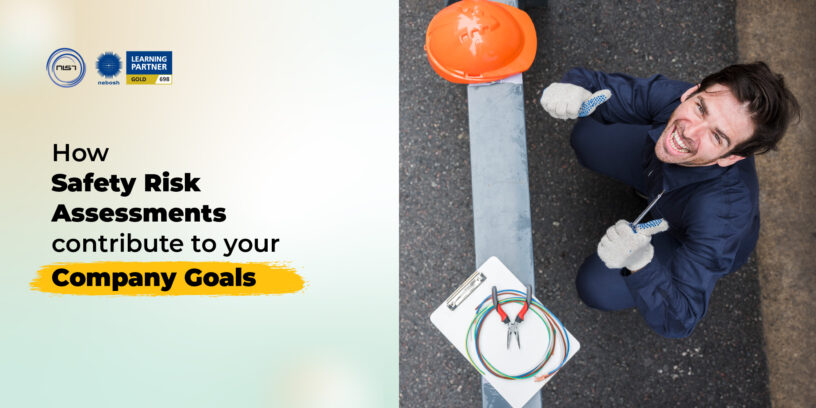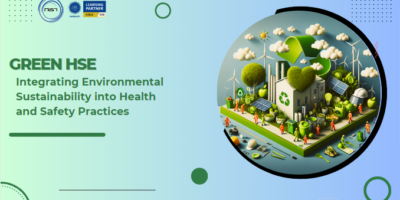Workplace accidents do occur. They can be avoided in certain cases but not in others. Depending on how serious the accident was, the results could include broken equipment and hurt employees, both of which could reduce production at your business. A key duty of both employees and employers is to take action to prevent accidents.
Putting processes in place to assist decrease the number and severity of workplace accidents is one of the greatest methods to do so. Safety Risk Assessment is considered to be the ideal instrument for the job. A risk assessment provides systematic techniques for identifying and then minimising workplace risks, which reduces the likelihood that such risks may cause accidents. Here are some important facts concerning the risk assessment procedure.
What Risk Assessment does?
Risk assessments define rules and processes for businesses to follow that, when adopted, reduce the likelihood of employee injury and equipment damage. A risk assessment entails inspecting work locations and the types of activities that take place on that jobsite in order to identify inherent hazards associated with that site and those activities. Safety risk evaluations can search for instances where there are no existing work risks but could arise if conditions are left unchecked.
A risk assessment looks at more than just workplace dangers that may harm employees. The goal of safety risk assessments is to identify all dangers, including those that may only harm non-employees such as retail customers, third-party delivery staff, and site visitors. This makes a workplace safer for everyone involved, regardless of whether they work there or not.
Steps involved in Risk Assessment
The methods used to do risk assessments vary greatly based on the hazards specific to the type of business, the industry the firm is in, and the compliance regulations that are relevant to that particular business or industry. Regardless of the sort of business or industry, there are five broad measures that organisations can take.
Step 1: Identify the hazards. The first stage in conducting a risk assessment is to identify any potential risks that, if they occur, might impair the organization’s capacity to conduct business. Natural / man-made disasters, utility outages, fire, cyber-attacks, and power outages are examples of potential risks that could be evaluated or recognised during risk assessment.
Step 2: Figure out what or who might be harmed. After identifying the threats, the following stage is to establish which business assets would be harmed if the risk materialised. Critical infrastructure, IT systems, corporate operations, company reputation, and even employee safety are examples of company assets that are vulnerable to these hazards.
Step 3: Assess the hazards and devise countermeasures. A risk analysis can assist in determining how risks will impact business assets and the steps that can be implemented to reduce or eliminate the impact of these hazards on business assets. Property damage, company interruption, financial loss, and legal penalties are all potential risks.
Step 4: Document your results. The risk assessment findings should be documented and filed as conveniently accessible formal documentation by the company. The records should include information about prospective hazards, related risks, and plans to avoid the hazards.
Step 5: Regularly review and update the risk assessment. In today’s business climate, potential dangers, risks, and the controls that protect against them can all change quickly. Companies must update their risk assessments on a frequent basis in order to respond to these developments.
Risk Assessment Goals
Risk assessment goals, like risk assessment procedures, will most likely vary depending on industry, business type, and relevant compliance laws. For example, an information security risk assessment should detect weaknesses in the organization’s IT security architecture as well as compliance with specific laws, mandates, and regulations.
The following are some common goals and objectives for conducting risk assessments across industries and business types:
- Creating a risk profile that includes a quantitative examination of the various threats that the organisation confronts.
- Creating an accurate inventory of IT and data assets.
- Justifying the expense of risk and vulnerability mitigation security remedies.
- Identifying, prioritising, and documenting risks, threats, and known vulnerabilities to the infrastructure and assets of the firm.
- Budgeting for the remediation or mitigation of identified risks, threats, and vulnerabilities.
- Understanding the return on investment (ROI) when money are put in infrastructure or other corporate assets to mitigate risk.
How Safety Risk Assessments Improve Overall Safety
Safety risk assessments are more than just tools for locating workplace hazards or risks. In fact, they’re imperative for planning how to effectively address these threats. Of course, for this to happen, employers must first be aware that there are problems that need to be fixed. Also, business owners should advise their staff to report safety issues, and also need to periodically examine their own safety risks.
Employers who make it a point to have a risk assessment schedule are considerably more prepared to comprehend the general levels of safety at their workplace. Here is where safety risk assessments truly excel, as an employer may use an assessment to pinpoint a potential risk before taking action to resolve it and preventing an accident from occurring.
Conclusion
It’s wise to approach safety with caution at all times. This is especially important to remember when guarding your ability to make a living. Safety risk assessments assist in maintaining safe work environments, which is in the best interests of both a business and its employees. Risk assessments need to be conducted consistently and on a frequent basis if you want your firm to succeed.
NIST Global – Your Safety Partner
At NIST Global, we offer Risk Assessment Training (HIRA) for corporates & varied industrial sectors. Our safety experts provide extensive training on hazard identification and risk assessment techniques in order to create a safe work environment. We also provide Risk Assessment Audit & Gap Analyses where auditors will you identify potential risks & its control measures.
For further details regarding Risk Assessment training / audit, kindly call +91 9384663536 or mail us at corporate.sales@nistinstitute.com














Leave a Reply